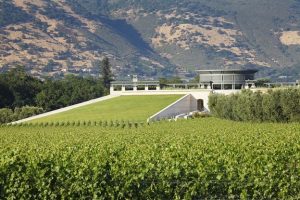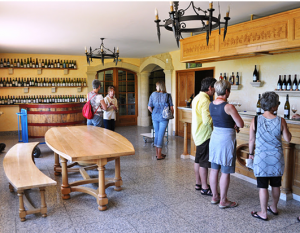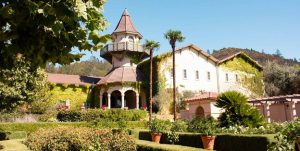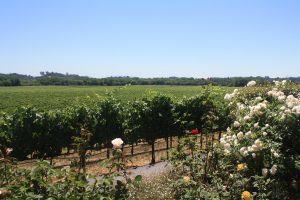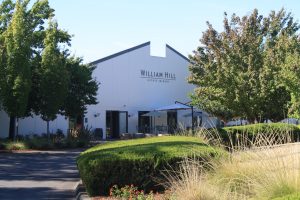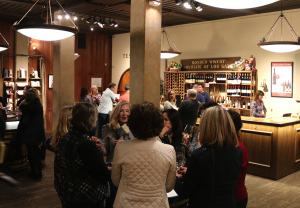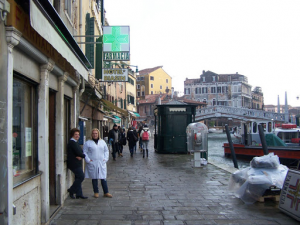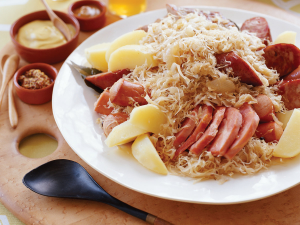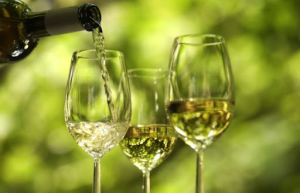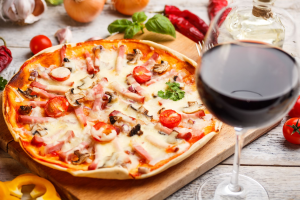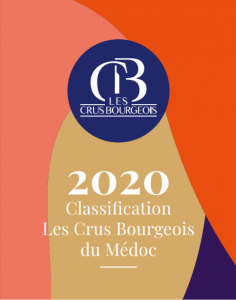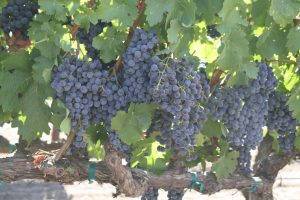In some ways, wine tasting is the same experience wherever you do it. Someone offers you a glass, fills it with wine and tells you what you have in your glass. You sip the wine, think about how it smells and tastes and try to remember how much you liked it. But in many other not quite so fundamental ways, the experience of wine tasting varies greatly depending on what part of Wine Country you are in when you do it. Of course, different places make different kinds of wine but let’s put that aside. We are talking here simply of the differences in the experiences you have, which after all is what Power Tasting is all about.
Opus One winery, one of the most European tasting experiences in California. Photo courtesy of the Napa Valley Register.
Wine tasting in California is rather straightforward, with a few big exceptions. You drive up to a pretty building, enter a well-decorated tasting room and sample several wines. In most places, there are a variety of wines to choose among – red, white and rosé – and most tasting rooms allow you to try four or five of them. In a few wineries there is a dessert wine to top it all off. If it’s not too busy and if your server has some knowledge of wine, you might also have the chance for an interesting discussion about what you’re being served.
As to those California exceptions, more and more wineries that sell highly priced wines now only offer seated tastings by appointment. Often a tour is a prerequisite for a tasting. There will be a smaller number of wines available, but they will all be well-made expressions of the terroir and the varietal.
Domaine la Soumade in the Southern Rhone Valley, one of the most Californian tasting experiences in Europe. Photo courtesy of the Our House in Provence blog.
Europe is too big a place with way too many wines to make any meaningful generalizations…but we’ll try anyway. In some places, the experience is quite Californian. Wineries have built pretty buildings (or taken over quite impressive old buildings) and serve their wines at a stand-up bar. In terms of the experience, you could just as well be in Mendocino as Montalcino. The conversation may be somewhat more limited, depending on your language skills and that of the server. The range of wines you may taste could be very much more limited; in some places such as Bordeaux, Burgundy or Chianti they only make a red and a white and the only variety is based on the level of quality.
There are several other variations in Europe. The biggest, best known producers only offer tastings by appointment, if they do so at all. The service will be in well-spoken English, because you reserved it that way. There may be only one wine to taste and it will be very good.
At the other extreme, there are many instances in Europe where a tasting, such as it is, is held in the winemaker’s kitchen, with that fellow or his aunt serving you whatever they make. In some places that may be only one wine, but more likely you find a fairly broad selection of the same type of wine from their properties around the region.
Since these generalizations are so broad, we recommend you do a little homework before you travel to taste wine in Europe. It will save you from misunderstandings and disappointments.
